Fyodor Yurchikhin
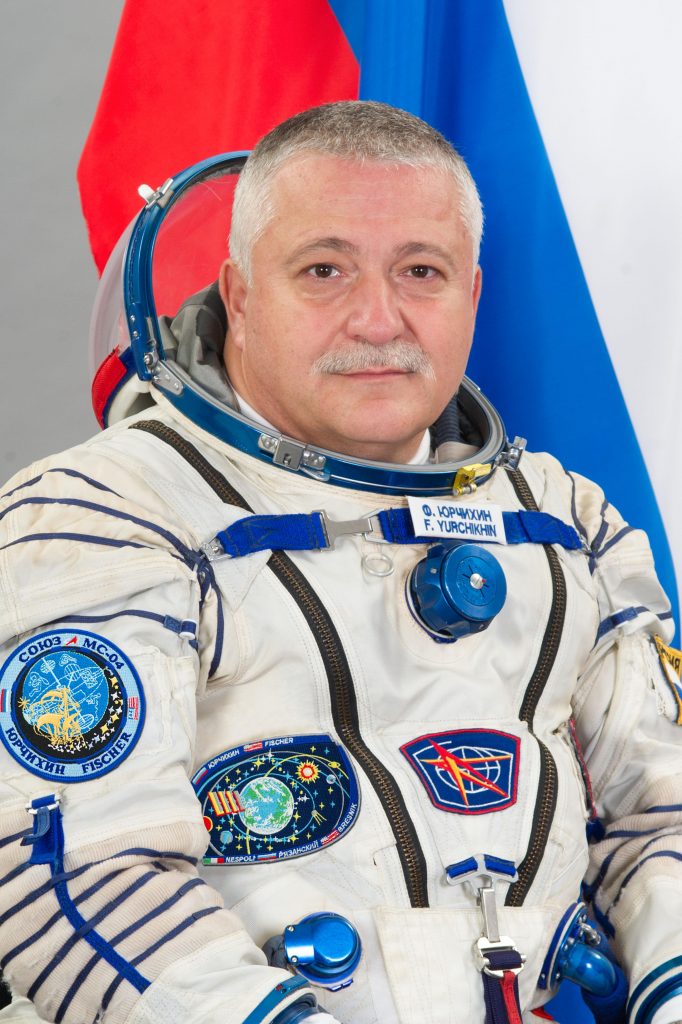
Fyodor Yurchikhin, born January 3, 1959 in Batumi, Geogian SSR, is one of Russia’s most experienced Cosmonauts in active duty. A trained mechanical engineer, Yurchikhin flew on the U.S. Space Shuttle, the Russian Soyuz and completed three long-duration missions to the International Space Station, spending a total of 537 days in space. He will make his return to the Space Station in 2017 for a half-year stay as part of Expedition 51/52.
Yurchikhin graduated from high school in Batumi in 1976 and entered the Moscow Aviation Institute from which he graduated in 1983 with a bachelor’s degree in mechanical engineering specializing in space vehicles. After his graduation, Yurchikhin began working at the Russian Space Corporation Energia where he held the positions of engineer, senior engineer, and lead engineer, also working at the Russian Mission Control Center supporting the Mir and Soyuz programs as flight controller and shift manager for mission planning. In 1995, he became the lead engineer for the Shuttle-Mir and NASA-Mir programs.
Fyodor Yurchikhin was selected as a Cosmonaut Candidate for the Energia detachment in 1997 and entered two years of basic training and evaluations in 1998. He then entered specialized training operations under the International Space Station Program. In parallel, he worked on his Master thesis and received a degree in economics in 2001.
In 2001, Yurchikhin transferred to NASA’s Johnson Space Center to begin training for a flight on the Space Shuttle. His first space flight was STS-112 aboard Space Shuttle Atlantis.
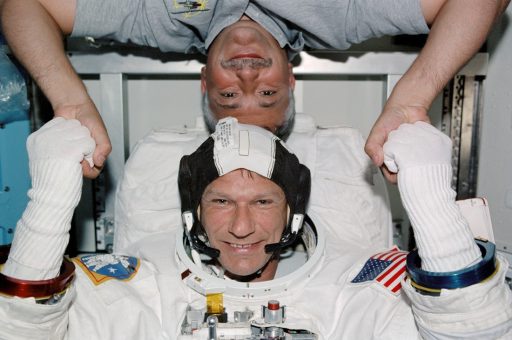
The mission to the International Space Station began on October 7, 2002 and is also known as ISS Assembly Mission 9A. Atlantis delivered the large S1 starboard truss segment to the Space Station that was installed via several spacewalks over the course of the mission. Atlantis also delivered the Crew Equipment Translation Aid (CETA) Cart to the Space Station as well as internal cargo. Atlantis returned to Earth after a 10-day 19-hour 58-minute flight, making 170 orbits.
In 2004/2005, Yurchikhin trained as a backup crew member for ISS Expedition 13 and in 2005/06 as backup Commander for a Soyuz mission to ISS. In April 2006, he began training for a prime crew assignment as ISS Expedition 15 commander and Soyuz Flight Engineer.
Yurchikhin launched aboard Soyuz TMA-10 with Soyuz Commander Oleg Kotov and Spaceflight Participant Charles Simonyi on April 7, 2007. They docked with ISS two days later and started a mission dedicated to ISS assembly and utilization.
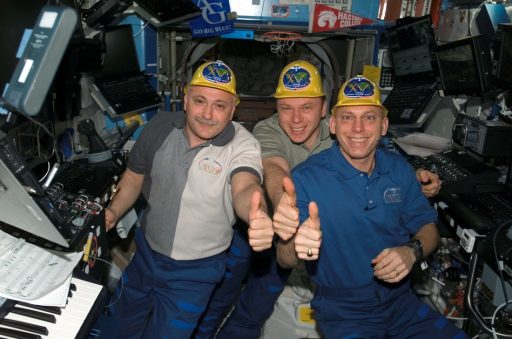
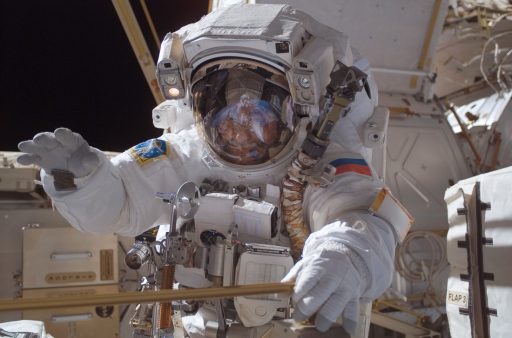
Expedition 15 was comprised of Yurchikhin, Kotov as well as Suni Williams, for the first part, and Clay Anderson, for the second part. Over the course of Expedition 15, the Space Station’s truss segment was expanded when STS-117 and STS-118 delivered the S3/S4 and S5 Truss Segments. In addition to spacewalks performed as part of the shuttle missions, the station crew stepped outside three times to outfit the exterior of ISS. Two were Russian-based EVAs of five-and-a-half hours performed by Yurchikhin and Kotov to install debris shields on the Russian Service Module, route GPS and Ethernet cables between modules and install external science packages.
Also, Yurchikhin stepped outside with Clay Anderson to perform a US-Stage EVA to
swap out parts on the Mobile Transporter, reconfigure the external ammonia system and clean a berthing port on the Unity Module. Over his three Expedition 15 spacewalks, Yurchikhin logged 18 hours and 44 minutes of EVA time. The mission of Soyuz TMA-10 ended on October 21, 2007, bringing Kotov and Yurchikhin as well as spaceflight participant Sheikh Muszaphar Shukor back to Earth.
During the deorbit phase, the Orbital Module failed to separate from the Soyuz Entry Module, causing the vehicle to perform a ballistic re-entry with larger forces acting on the vehicle and crew ahead of a safe parachute-assisted landing 340 Kilometers short of the planned landing site.
Yurchikhin did not have to wait long for his second flight assignment, announced as a prime crew member for ISS Expedition 24 in April 2009. Following the completion of flight-specific training, he and his two NASA flight engineers Doug Wheelock and Shannon Walker entered final exams in late May 2010, going through integrated Soyuz training for nominal and off-nominal scenarios and completing Russian Segment training exams before flying to the launch site.
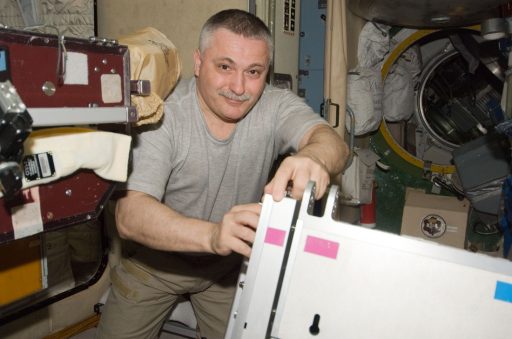
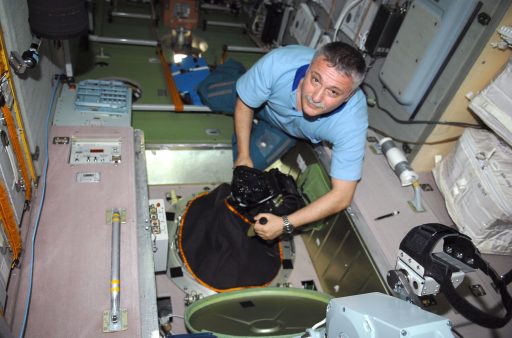
Soyuz TMA-19 with commander Yurchikhin and Flight Engineers Wheelock and Walker launched atop a Soyuz FG rocket on June 15, 2010 for a two-day rendezvous to link up with ISS where Aleksandr Skvortsov, Mikhail Kornienko and Tracy Caldwell-Dyson were waiting.
Expedition 24 continued the final stretches of ISS Assembly and Outfitting while also starting to press into more and more utilization activities.
Yurchikhin and Kornienko completed a 6.5-hour EVA in July 2010, running data cables between the Russian modules, relocating an external camera assembly and replacing a docking camera for the European Automated Transfer Vehicle. Some excitement emerged on July 31st when the ISS crew was awoken by a master alarm when a large Pump Module on the Station’s truss failed, knocking half the Station’s cooling system offline and requiring system power downs. Three EVAs by Wheelock and Caldwell-Dyson were needed to replace the balky pump module and restore ISS to nominal operations.
Expedition 24 ended in September and Yurchikhin, Wheelock and Walker welcomed the Expedition 25/26 crew of Scott Kelly, Aleksandr Kaleri and Oleg Skripochka in October. Over the next two months, the crew oversaw a Progress cargo craft rotation and celebrated the tenth anniversary of human life, work and research on the ISS. Fyodor Yurchikhin stepped outside with Oleg Skripochka on a 6.5-hour excursion toward the end of the mission, installing a multipurpose workstation, putting in place structural struts and maintaining, installing and retrieving different external experiments.
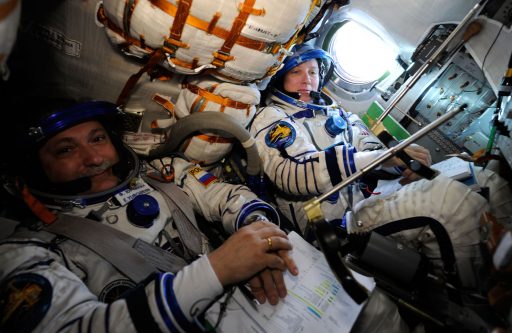
The Soyuz TMA-19 mission came to an end on November 26, 2010 with an early morning landing in the icy steppe of Kazakhstan after a mission duration of 163 days in orbit. After his second long-duration stint, Yurchikhin had logged 371 days in space and accumulated 31 hours and 54 minutes of EVA time.
After his return, less than a year passed before Yurchikhin received his next crew assignment for ISS Expedition 39/40, however, that decision was changed in December 2011 and he became part of the Expedition 36/37 prime crew. He transferred from the Energia Cosmonaut detachment to the Gagarin Cosmonaut Training Center Cosmonaut Corps in an overall effort to consolidate cosmonaut groups.
Yurchikhin and his Soyuz Flight Engineers Luca Parmitano of ESA and NASA’s Karen Nyberg were on standby as backup crew members for the Soyuz TMA-07M mission in December 2012 before resuming training as part of their prime crew assignment. The trio blasted off aboard Soyuz TMA-09M on May 28, 2013 and arrived at ISS two days later to join the Expedition 36 crew of Pavel Vinogradov, Aleksandr Misurkin and Chris Cassidy.
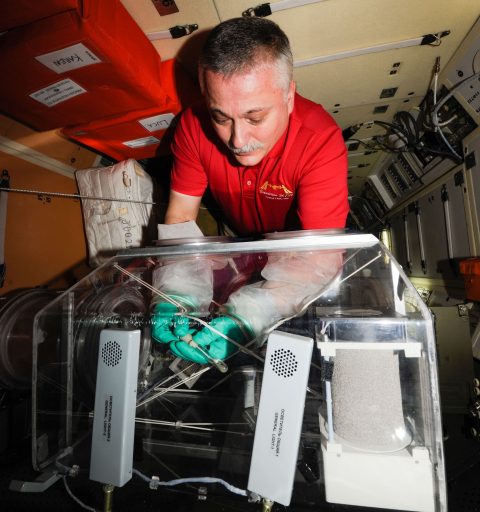
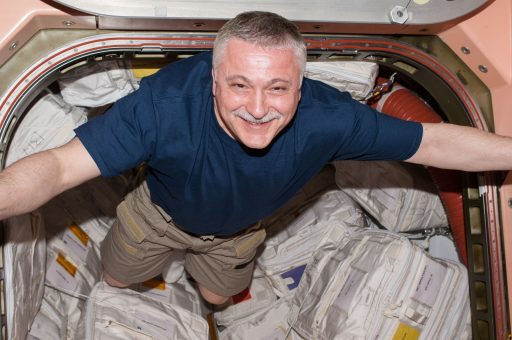
Increment 36 was lined up to be one of the most eventful in ISS history to date with a packed visiting vehicle schedule, spacewalks on both segments of the Station and over 100 scientific studies.
Yurchikhin and Misurkin ventured outside in June to replace a flow control package in the external cooling system of the Russian segment, install external experiments, put in place handrails and prepare for future cable routing work. Another two EVAs by Yurchikhin and Misurkin in August dealt with cable routing on the Russian Segment, the removal of the experimental Laser Communications System, inspection of the KURS docking systems and the preparation of a URM-D workstation ahead of the installation of the UrtheCast cameras on a later EVA.
Expedition 36 welcomed the ATV Albert Einstein, Japan’s fourth H-II Transfer Vehicle and a new Progress freighter to keep up a steady chain of supplies to the orbiting outpost.
Expedition 36 transitioned to the next increment in September with the departure of Soyuz TMA-08M and ISS was staffed by a crew of three for two weeks before Oleg Kotov, Sergei Ryazansky and Mike Hopkins arrived at ISS. The six crew members oversaw the arrival of the first operational Cygnus resupply mission in September and saw off ATV-4 in late October before Yurchikhin, Parmitano and Nyberg went on a half-hour ride on their Soyuz to change docking ports for a direct crew handover.
Soyuz TMA-11M arrived at ISS on November 7 with Mikhail Tyurin, Rick Mastracchio, Koichi Wakata and the Olympic Torch. Kotov and Ryazansky stepped outside ISS on the 9th of November to take the torch into the vacuum of space before it was safely packed away inside Soyuz TMA-09M to return to Earth and eventually light the Olympic Fire for the 2014 winter games in Sochi. TMA-09M returned to Earth on November 11 after a mission of 165 days and 21 hours.
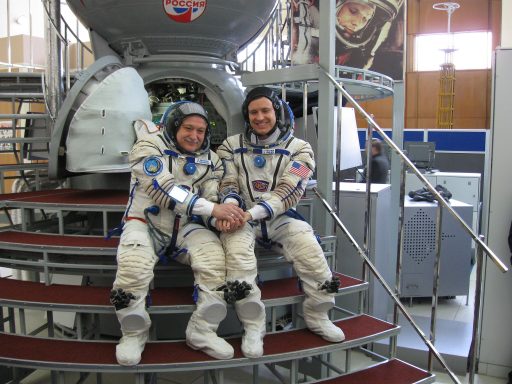
Yurchikhin was on the short list to become commander of the first flight of the upgraded Soyuz MS spacecraft and commander of ISS Expedition 49, but assignments were shuffled by the end of 2014 and Yurchikhin was assigned to ISS Expedition 52/53 with Paolo Nespoli and Jack Fischer. However, crews were shuffled in 2016 due to Russia’s plans to reduce their permanent crew on ISS to two members and Yurchikhin and Fischer ended up on a two-person Soyuz flight with cargo occupying the third seat aboard their Soyuz MS-04 spacecraft, joining Expedition 51/52 with Yurchikhin serving as commander for the 52nd Station increment.
Over the course of his five space missions, Fyodor Yurchikhin logged 537 days, 2 hours and 30 minutes in space. He accumulated 51 hours and 53 minutes of EVA time over eight spacewalks, ranking 7th on the all-time list.
Fyodor Yurchikhin is married to Larisa Anatolievna Yurchikhina and has two daughters. His hobbies include collecting stamps and space logos, sports, history of cosmonautics, and promotion of space. He also enjoys reading history, science fiction and the classics.
